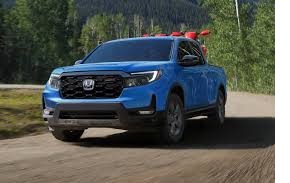What size trailer do I need to haul a stock M715?
If you’re a proud owner of an M715, you understand the importance of taking care of your vehicle and ensuring its safe transportation. Whether you’re heading to a car show, relocating, or simply want to take it on the road, finding the right trailer size is paramount to keep your stock M715 secure during transport. In this article, we’ll explore different trailer sizes and considerations to help you determine the size that’s ideal for hauling your M715.
What size trailer do I need to haul a stock M715?
To know the size of trailer you need to haul a stock M715, you have to:
- Know the dimensions of your M715
Before you start searching for the perfect trailer, it’s essential to know the precise dimensions of your vehicle. The stock M715 has an overall length of approximately 201 inches (16.75 feet), width of 86 inches (7.17 feet), and a height of 76 inches (6.33 feet) without any modifications. It’s crucial to note that if you’ve made any alterations or additions to your M715, such as lifting kits or larger tires, these measurements may differ. Measure your vehicle accurately, considering any additional modification, to ensure you choose the right trailer size. - Consider the weight capacity of the trailer
Another important factor to consider when hauling your M715 is the weight capacity of the trailer. The stock M715 has a curb weight of around 5,425 pounds. However, if you’ve made any modifications or loaded it with accessories, the weight may differ. Choose a trailer that can handle the combined weight of your vehicle and any additional items you plan to transport. It’s recommended to have a trailer with a weight capacity of at least 6,000 pounds to provide a buffer zone. - Determine the type of trailer you need
There are different types of trailers, each with its own advantages and disadvantages. For hauling a stock M715, two popular options are enclosed trailers and open flatbed trailers.
- Enclosed trailers: These trailers provide full coverage and protection from the elements. If you’re concerned about weather conditions, security, or want to transport your M715 discreetly, an enclosed trailer is a great choice. Ensure that the interior height of the trailer is at least a few inches higher than your M715’s height to accommodate any antennas or other protrusions.
- Open flatbed trailers: These trailers offer easy loading and allow for quick access from all sides. They’re typically less expensive than enclosed trailers and give your M715 an open-air feel during transportation. However, since the M715 is not as common as other vehicles, you may want to consider using additional straps and covers to secure your vehicle properly and protect it from the elements.
- Determine trailer size requirements
The size of the trailer you’ll need depends on various factors such as the length, width, and height of your M715, as well as any additional equipment or accessories you plan to transport. Here are some considerations for each dimension:
- Length: To securely haul an M715, you’ll need a trailer with a length of at least 201 inches (16.75 feet) to accommodate the entire vehicle. However, it’s recommended to select a trailer that’s a bit longer to provide some extra space for maneuvering and any additional storage needs.
- Width: The stock M715 has a width of 86 inches (7.17 feet). To ensure adequate space and prevent any potential damage during transit, choose a trailer that is at least 90 inches (7.5 feet) wide. This will provide some extra clearance and allow for easy loading and unloading.
- Height: The height of an enclosed trailer should be several inches taller than the M715’s height to accommodate any antennas or other tall objects. A minimum height of 82 inches (6.83 feet) should be sufficient, but again, it’s recommended to choose a slightly taller trailer to avoid any damage while loading and unloading or during transportation.
- Consider additional storage needs
If you plan to transport additional items or equipment alongside your M715, you need to account for their dimensions and weight as well. Make sure you have enough space on the trailer to safely secure and evenly distribute the weight of both your M715 and any additional cargo. A larger trailer size will allow you to store other items conveniently without compromising the security or balance of your M715 while in transit. - Safety considerations
When hauling your M715, safety should always be a top priority. Ensure that the trailer you choose has appropriate safety features such as durable tie-down points, trailer brakes, and proper lighting. Additionally, don’t forget to consider the towing capacity of your towing vehicle. Make sure it can handle the weight of both the trailer and your M715, and always follow the manufacturer’s guidelines for safe towing practices. - Seek professional advice
If you’re unsure about which trailer size or type would be the best fit for your specific needs, it’s always a good idea to seek advice from an expert or talk to a reputable trailer dealer. They can offer guidance based on your requirements and provide you with options that suit your budget, towing capacity, and desired features. They can also explain any legal requirements or restrictions in your area related to trailer size and weight.
Should I choose M715 or M725 as a Towing truck?
The M715 or M725 trucks were not specifically designed or intended for towing purposes. They were primarily military vehicles used for transportation and light cargo hauling. While they do have sufficient power and a sturdy frame, their towing capabilities are limited compared to modern trucks specifically designed for towing.
If you need a dedicated towing truck, it would be more advisable to choose a modern model designed for towing, such as a full-size pickup truck or a heavy-duty truck. These trucks are specifically built with towing capacities in mind, with features such as reinforced frames, powerful engines, and integrated towing systems.
However, if you have a light towing need and already have an M715 or M725 truck, they can be used for occasional towing of light loads. Just be mindful of the truck’s limitations, such as its lower towing capacity and potentially less advanced towing features compared to modern trucks.
Golf cart and Harlay on single axle trailer is it doable?
Can I remove 1 of the tires on a dual axle trailer?
What size truck and trailer to haul 1 cord
ruck and trailer needed to haul 1 cord of wood will depend on the dimensions and weight of the wood.
Typically, a cord of wood measures 4 feet high, 4 feet wide, and 8 feet long, creating a volume of 128 cubic feet. The weight of a cord of wood can vary depending on the type of wood, but it usually ranges between 2,000 to 5,000 pounds.
To haul a cord of wood, you would need a truck and trailer with enough capacity to handle the weight of the wood and accommodate its dimensions.
A full-size pickup truck, such as a Ford F-150, Chevy Silverado, or Ram 1500, would generally be suitable for hauling 1 cord of wood. These trucks typically have a payload capacity of around 1,500 to 2,000 pounds, which should be sufficient unless the wood is particularly dense or heavy.
As for the trailer, a utility trailer or flatbed trailer with a capacity of at least 2,000 pounds should be able to handle the weight of the wood. The trailer should also have enough space to accommodate the dimensions of a cord of wood.



